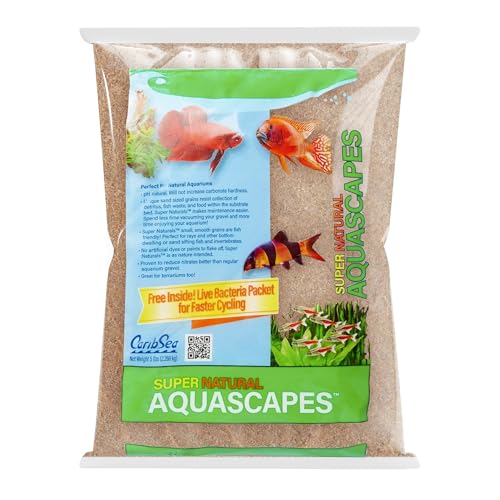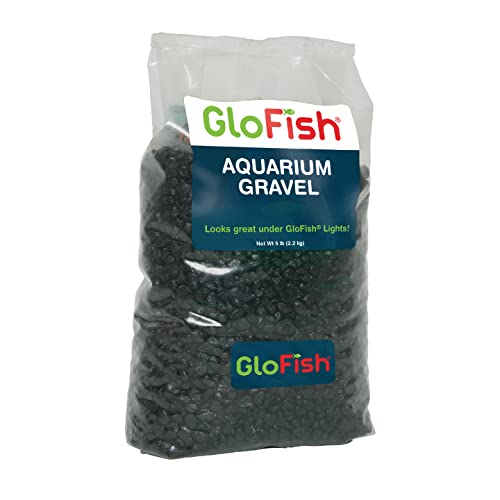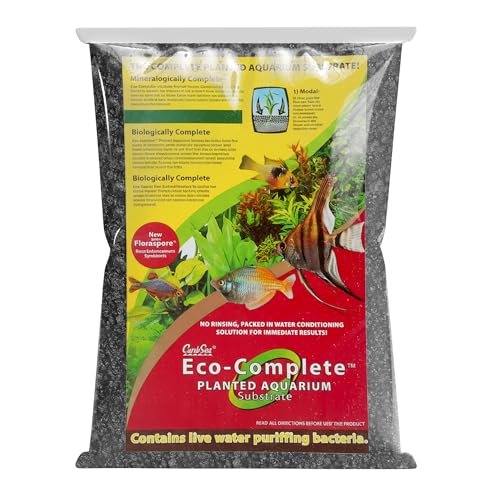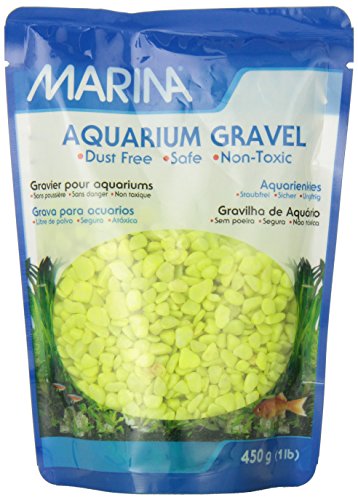Have you ever wondered why people use substrate to cover up the bottom of their betta tanks? Is it really necessary to do that, or do people just use it to enhance their aquarium look? Every living organism depends on a base to grow properly.
Substrates can offer them that required base and can maintain the water chemistry for those organisms. Whether you have a betta or other fish, you will have to create a suitable environment for them, and it is impossible without a substrate.
However, you will find different types of substrate, from rocks to marbles and sand to gravel, for aquariums. And choosing the best one for your bettas is a challenging task. It is not like rushing to the nearest sandpit to get sand and then filling up the bottom of the tank with sand.
Bettas need different things to live in the tank. And if you ignore those things, they may not survive in the tank.
Well, don’t worry at all, as here you will get to know more about the substrate, including types and how to choose the best one for your tank. Besides, to make the process much easier for you, we have mentioned down some best substrates that you can buy online to create a healthy environment. So, let’s get started with this.
Table of Contents
Best Substrate For Betta: A Quick Summary
The best substrate for betta fish is a fine-grain gravel or sand, as it is easier on their delicate fins and allows them to dig and build nests. Avoid sharp or rough substrates and large pebbles, as these can injure bettas. It is also important to regularly clean the substrate to prevent the buildup of harmful bacteria.
Betta Fish Substrate Overview
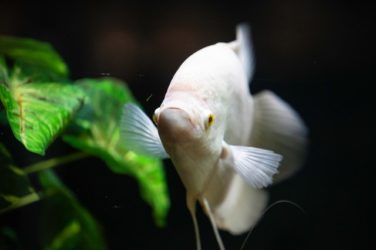
Speaking about betta fish substrate, you can consider this as the stuff that you will use to line the tank’s bottom section. This can be pebbles, rocks, sand, and more. But it is also important to understand that substrate also work as a base on which organism can grow. Plants and beneficial bacteria generally attach themselves to the substrates to grow.
Substrates are not just used to create a visually appealing factor. They are used for betta tanks as they play a great role in setting up a stable and healthy betta tank. It offers material on which you can anchor decorations and plants.
Besides, using this, you can cover the reflective button of the tank that can create a stressful environment for bettas. The most important thing is that a good substrate can break down the fish particles or waste and then convert those into plant foods.
So, if you want to provide your bettas and aquarium plants with a healthy environment, then you should use good-quality substrates. Keep reading to explore more about this.
What Substrate Does Betta Fish Have in the Wild?
In general, bettas prefer to live in shallow and highly vegetated waters. For example, rice paddies, marshes, slow-moving streams, etc. Based on this, it can be said that the substrate may consist of muddy silt and rotted plantation. In such an environment, they get enough space to hide. Besides, they also use leaves as their bed to rest.
Well, creating such substrate is challenging and also not recommended for your betta tank as the tank water will become very cloudy or muddy.
However, no matter what types of substrate you want to use, you need to make sure that that substrate can support the plants, especially natural aquarium plants.
How Much Substrate Do You Need for a Betta Tank?
The experts say it is better to cover the bottom of the aquarium by around one to two inches with substrates. However, things can change based on the type of filters you are using. So, you should also follow the instructions mentioned on the filter.
The general rule is 1 pound of substrate will be enough for a tank with 1 gallon of water. That means, if you have a 6-gallon tank, then use 6 pounds of substrate. This rule also works perfectly for fish tanks under 30 gallons.
Usual Suspects: Gravel vs. Sand
As discussed above, the material that is used in the bottom of the fish tank is known as substrate. Well, in the market, you will get different options, and the most common types of substrates are sand and gravel.
Well, some people may find both gravel and sand very similar, but they have their pros and cons. Choosing the right one will depend on the type of betta you want to keep. However, let’s have a detailed discussion on both options so that you can choose the right type of substrate for your aquarium.
Aquarium Gravel
As per the experts, aquarium gravel substrate is a perfect choice for those who have a freshwater aquarium. Gravels allow the water to flow through them properly. So, you don’t have to worry about building up bacteria or amoebas in the gravels.
Well, this type of substrate is heavy and may not get pulled into the filters. They are available in different colors. Using them, customizing your fish tank will not be a difficult thing. The best thing about gravels is they will keep converting the aquarium waste into food. As they are not harmful and smooth, most betta owners prefer to use this substrate. However, this substrate may not prevent the development of blue-green algae, which is harmful to your fish. But you can prevent this using a good quality UV-sterilizing filter.
Aquarium Sand
Unlike gravel, sand will not allow the water in the tank to move through it. But if you have fish that like to scavenge or burrow in the sand, then you will have to use sand as the substrate.
Besides, aquarium sand also offers some amazing benefits. For example, by applying the san properly, you can make the setup look more natural. Besides, it will mimic the riverbeds or lakes, creating natural habitats for your betta.
On the other hand, this substrate doesn’t need to be changed frequently. Well, before using it, you should know about some limitations of the sand substrate. It can create dead zones where the oxygen level will be low.
And to prevent this, you may need to use a sufficient filtration system. Furthermore, if you are planning to create a planted tank, then sand may not be a good option for you as some aquatic plants will not thrive on this.
Now, let’s have a look at the best substrates that you can use. The list includes both the sand and gravel substrates.
9 Best Substrate for Betta Reviewed
1. SACKORANGE Aquarium Gravel River Rock
These rocks are 100 percent natural and polished carefully to have a smooth and shiny-looking effect. They come in different natural colors and can last for years. This option is relatively inexpensive. Besides, you can also use these for your home décor projects, like wedding buffets, bowls, floral arrangements, and more.
Water will flow swiftly through the rocks, so you don’t have to worry about the development of algae. It is priced at USD 13.79.
Pros
- Natural rock
- Good for plants
- Very easy to clean
Cons
- You can’t use live feed with this gravel as they may hide between the rocks.
- Some come with sharp edges.
– – –
2. Caribsea Super Naturals Aquarium Sand
This is dark sand and is created using natural sources. This sand will not affect the water chemistry of your aquarium as it is pH neutral. Besides, no artificial color or chemicals are used in this.
Using this, you can create a supernatural environment for your bettas to thrive properly. As the sand color is dark, it will highlight the colors of the bettas. Besides, it will also work as a perfect anchor for plants. Give it a try. You can get it at just USD 31.84.
Pros
- It doesn’t affect the pH levels
- No presence of artificial dyes or colors
- Budget-friendly
Cons
- It may create an oily residue over time.
- Fine grains may create issues while cleaning the tank.
– – –
3. GloFish Aquarium Gravel
If you are in search of affordable aquarium gravel for your bettas, then this will be an ideal option. This 5-pound bag of gravel will cost you just USD 8.99. This gravel functions as a perfect fluorescent accent piece.
Using this, you can turn the underwater environment into paradise. Besides, the binding quality of this gravel is quite impressive.
Pros
- It can be used as an accent or substrate
- Can filter the waste properly
- It doesn’t require frequent maintenance
Cons
- Poor packaging quality
- May decay after a few months of usage
– – –
4. CaribSea Eco-Complete Planted Substrate
Priced at just USD 23.99, you will find this gravel substrate a perfect option for your fish tank. The best thing about this natural substrate is it can easily convert the waste of your fish into food for the aquarium plants.
You will not find any dyes or artificial chemicals in this. This product can be easily used for a large tank. You can see the result within just 4 days.
Pros
- This single packet is enough for a big aquarium.
- 100 percent natural and good for bettas
- You can use different plants with this.
Cons
- It may create issues while cleaning.
- With this substrate, your aquarium may require frequent cleaning.
– – –
5. EHEIM Pro Biological Substrate
Priced at USD 21.98, you may find this product a little costlier than other listed options, but it also has some amazing benefits. To keep the water and fish protected, this substrate is made using highly porous sintered glass.
And you can reuse this for around 5 to 6 months. While offering better flow, it creates better bacterial colonies penetration.
Pros
- One packet of this substrate can easily cover around 1800 sq ft
- Lowers aquarium maintenance requirements
- Not at all harmful for your little bettas
Cons
- The cost is a little high
- Not suitable for all types of aquarium plants
– – –
6. Spectrastone White Aquarium Gravel
This is a natural and affordable betta aquarium substrate and can offer your fish tank a natural look. The materials that are used for it don’t have any toxic agents and are not harmful.
Besides, this gravel will not affect the pH level. As the pieces are small, they create a natural environment for your fish. You can get these 5 pounds of gravel substrate at USD 10.57.
Pros
- Completely safe to use.
- The gravel is perfectly sealed to avoid the colors from fading
- It glows beautifully under an LED light or backlight
Cons
- Its sealant may prevent the good bacteria from growing in substrate
- It can only be used for freshwater aquariums.
– – –
7. Marina Decorative Gravel
When it comes to adding unique color to your betta fish aquarium, you will not find a better option than this gravel substrate. The neo-yellow-colored substrate will help you to demonstrate the colors of your fish.
It perfectly holds plants in place. As the stones are coated with high-quality epoxy, they will not change the natural chemistry of the water. You can also use them with marbles to create a more decorative place. Buy it now at just USD 12.15.
Pros
- The product comes in different color options.
- It is an ideal substrate for aquariums with fresh water.
- It can hold heavy plants.
Cons
- The quality could be better.
- Sometimes you may find colored particles on the water or in the filter system.
– – –
8. Flourite Aquarium Substrate
If you want to create a densely planted betta tank to create a natural habitat, then you should go for this substrate. Flourite is well-known for being an ideal choice for helping in the growth of plants.
When you use this, you don’t have to worry about using any modifiers. The substrate looks really natural. Due to the clay surface, it will create space, allowing the healthy bacteria to grow. Order it now to get it at USD 19.99.
Pros
- It promotes the plant’s longevity.
- It works perfectly with different filter types and aquatic species.
- You don’t need any laterite.
Cons
- This is not perfect for any active tanks.
- The clay can create a dirty environment. So, you may need to change the water multiple times to get clear water.
– – –
9. Panacea Product Count Pan Marble Substrate
This substrate can create a beautiful appearance as it comes with different types of colors. So, based on your bettas’ colors, you can choose the right one.
Made of highly polished glass, these are safe for your fish and will not alter the tank water’s chemistry. Combine them with other substrates to come with different textures and looks.
Pros
- The smooth texture will not damage the bettas.
- It will make your betta aquarium looks colorful.
- It can be used combinedly with sand substrates.
Cons
- The fish waste will get trapped between these marbles, causing pollution.
- Not ideal if you want to use aquatic plants.
– – –
What Other Types of Substrate Are There?
Well, apart from the aquarium sand and gravel, you can also go for other types of substrates for your aquarium. These are:
Coral sand
Even though it is called coral sand, it looks and feels like gravel substrate. Even though some types of fish thrive in coral sand, for bettas, this is not a good option. Why? This substrate is made of calcium carbonate, and after a few months, it will get dissolved in water, changing the pH level. The environment will become more acidic.
Play sand
Even though this substrate is good, but you should not use this for your betta fish tank. As per the experts, such sand comes with bacteria that help brown algae to develop. This can harm your bettas.
Marble chipping
Some people use marble chipping as a substrate, but this is not a safe idea. They have calcium carbonate and will change water’s chemistry.
Marbles
For your betta tank, these can be a beautiful substrate. Most people prefer to use flat marbles. But they generally create gaps, and food will get stuck in those gaps, polluting the environment. So, you may need to clean the tank frequently if you are using marbles.
How to Choose The Best Substrate For Your Betta?
Choosing the best substrate for your betta is a challenging task as this can influence the living environment for your fish.
Well, to help you out with this, the experts have recommended considering these important factors to choose the right substrate from all the available options. These factors are:
Check if it is safe or not
When buying, you will have to conduct research thoroughly and check if that particular substrate is safe for your betta or not. Some substrates can lead to unhealthy environments, and your fish will develop various health issues like fungus and bacteria.
Go through the product descriptions to check the compatibility. Remember that bettas love to live in clean water, and so use substrates that can keep the water clean for a long time.
Do you want to use plants?
Experts always advise using live plants for their betta tanks as such types of fish always look for hiding places. Besides, they love to sleep on the leaves of the plant. On the other hand, plants can also enhance the quality of water.
You can use anubias that grows on driftwoods or rocks. They can grow on any type of substrate. Besides, Ludwigia or Brazilian pennywort can also be planted in any substrates. However, if you are planning to use Amazon swords or other heavy root feeders, then prefer to use the insert planted substrates.
Consider the size of your betta tank
The amount of substrate you will need depends on the tank’s size. You will find substrates in different-sized packages. Starting from 2 pounds to it can go up to 50 pounds. If you are using a large tank, go for large-sized packages.
The thickness of the substrate
Experts say it is better to use around 1 pound of substrate for 1 pound of water. Besides, make sure that the thickness of the substrate is around two inches. This will help the plants in spreading their roots.
Don’t go for dirty substrates
You should choose a substrate that can keep your aquarium clean. Bettas love a clean environment. But some substrates, like substrates with clay, when they are stirred up, can make the water dirty. So, if you are not up to a planted aquarium, using gravel substrates will be a perfect idea.
Don’t forget the color
Brightly colored substrates can make your bettas feel stressed out. But there is no such proof for that. But, if you talk about their natural habitat, they live above earthy and natural-colored floors.
So, you should go for such a color option. Besides, sometimes you can use a bright-colored substrate to show off your betta’s color. For example, if you are using a natural or dark-colored substrate, it can make your fish visually appealing.
What’s the best substrate for maintenance and cleaning?
Using marbles can be a good option, but they allow debris and waste to accumulate through the gaps. So, to keep the water clean, you will have to vacuum clean it frequently, and the process is very straightforward.
Some experts say maintaining a gravel substrate tank is quite easier compared to a tank with a sand substrate. As they are very heavy to get sucked, you can use a filter to clean up the debris. And while changing the water, you don’t have to pick the gravels. However, you should be very careful if you are using smaller size gravels.
If you are using sand, you will find debris and waste laying on the sand, and that makes vacuuming easier for you. But you should place the filter a little above the sand, or else the filter will suck up the sand. You should use a siphon to change the water. Remember that this substrate will not work well with an under-gravel filter.
Consider the time you can spend on your aquarium maintenance and choose the substrate accordingly. If you don’t want to do a frequent water change, then use gravel substrate.
Wrapping Up
Remember that the substrate for your betta aquarium is more than just creating a stunning visual appeal. A good type of substrate will also serve different purposes.
For example, apart from using them for decoration, you can use the products to help healthy bacteria to grow and be used as an anchor for plantations. So, understand your requirements, follow the above-mentioned tips to choose the right type of substrate.
You can use one or can also combine them all. You can always trust the substrate types mentioned here as they are betta-friendly substrates. Go and order them now.
No related posts.


